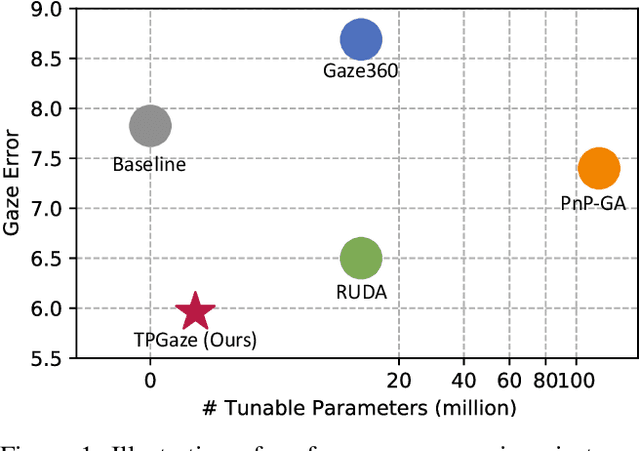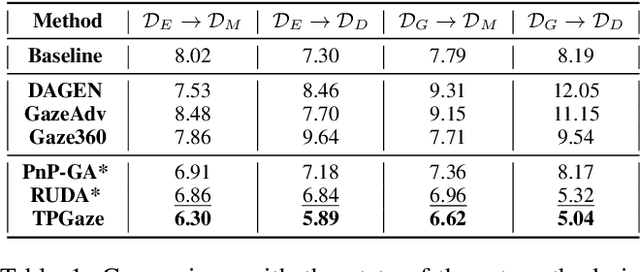Mohammad Hassanpour
Single Parent Family: A Spectrum of Family Members from a Single Pre-Trained Foundation Model
Jun 28, 2024Abstract:This paper introduces a novel method of Progressive Low Rank Decomposition (PLRD) tailored for the compression of large language models. Our approach leverages a pre-trained model, which is then incrementally decompressed to smaller sizes using progressively lower ranks. This method allows for significant reductions in computational overhead and energy consumption, as subsequent models are derived from the original without the need for retraining from scratch. We detail the implementation of PLRD, which strategically decreases the tensor ranks, thus optimizing the trade-off between model performance and resource usage. The efficacy of PLRD is demonstrated through extensive experiments showing that models trained with PLRD method on only 1B tokens maintain comparable performance with traditionally trained models while using 0.1% of the tokens. The versatility of PLRD is highlighted by its ability to generate multiple model sizes from a single foundational model, adapting fluidly to varying computational and memory budgets. Our findings suggest that PLRD could set a new standard for the efficient scaling of LLMs, making advanced AI more feasible on diverse platforms.
SkipViT: Speeding Up Vision Transformers with a Token-Level Skip Connection
Jan 27, 2024Abstract:Vision transformers are known to be more computationally and data-intensive than CNN models. These transformer models such as ViT, require all the input image tokens to learn the relationship among them. However, many of these tokens are not informative and may contain irrelevant information such as unrelated background or unimportant scenery. These tokens are overlooked by the multi-head self-attention (MHSA), resulting in many redundant and unnecessary computations in MHSA and the feed-forward network (FFN). In this work, we propose a method to optimize the amount of unnecessary interactions between unimportant tokens by separating and sending them through a different low-cost computational path. Our method does not add any parameters to the ViT model and aims to find the best trade-off between training throughput and achieving a 0% loss in the Top-1 accuracy of the final model. Our experimental results on training ViT-small from scratch show that SkipViT is capable of effectively dropping 55% of the tokens while gaining more than 13% training throughput and maintaining classification accuracy at the level of the baseline model on Huawei Ascend910A.
Test-Time Personalization with Meta Prompt for Gaze Estimation
Jan 03, 2024



Abstract:Despite the recent remarkable achievement in gaze estimation, efficient and accurate personalization of gaze estimation without labels is a practical problem but rarely touched on in the literature. To achieve efficient personalization, we take inspiration from the recent advances in Natural Language Processing (NLP) by updating a negligible number of parameters, "prompts", at the test time. Specifically, the prompt is additionally attached without perturbing original network and can contain less than 1% of a ResNet-18's parameters. Our experiments show high efficiency of the prompt tuning approach. The proposed one can be 10 times faster in terms of adaptation speed than the methods compared. However, it is non-trivial to update the prompt for personalized gaze estimation without labels. At the test time, it is essential to ensure that the minimizing of particular unsupervised loss leads to the goals of minimizing gaze estimation error. To address this difficulty, we propose to meta-learn the prompt to ensure that its updates align with the goal. Our experiments show that the meta-learned prompt can be effectively adapted even with a simple symmetry loss. In addition, we experiment on four cross-dataset validations to show the remarkable advantages of the proposed method.
Do LLMs Work on Charts? Designing Few-Shot Prompts for Chart Question Answering and Summarization
Dec 17, 2023Abstract:A number of tasks have been proposed recently to facilitate easy access to charts such as chart QA and summarization. The dominant paradigm to solve these tasks has been to fine-tune a pretrained model on the task data. However, this approach is not only expensive but also not generalizable to unseen tasks. On the other hand, large language models (LLMs) have shown impressive generalization capabilities to unseen tasks with zero- or few-shot prompting. However, their application to chart-related tasks is not trivial as these tasks typically involve considering not only the underlying data but also the visual features in the chart image. We propose PromptChart, a multimodal few-shot prompting framework with LLMs for chart-related applications. By analyzing the tasks carefully, we have come up with a set of prompting guidelines for each task to elicit the best few-shot performance from LLMs. We further propose a strategy to inject visual information into the prompts. Our experiments on three different chart-related information consumption tasks show that with properly designed prompts LLMs can excel on the benchmarks, achieving state-of-the-art.
SwiftLearn: A Data-Efficient Training Method of Deep Learning Models using Importance Sampling
Nov 25, 2023


Abstract:In this paper, we present SwiftLearn, a data-efficient approach to accelerate training of deep learning models using a subset of data samples selected during the warm-up stages of training. This subset is selected based on an importance criteria measured over the entire dataset during warm-up stages, aiming to preserve the model performance with fewer examples during the rest of training. The importance measure we propose could be updated during training every once in a while, to make sure that all of the data samples have a chance to return to the training loop if they show a higher importance. The model architecture is unchanged but since the number of data samples controls the number of forward and backward passes during training, we can reduce the training time by reducing the number of training samples used in each epoch of training. Experimental results on a variety of CV and NLP models during both pretraining and finetuning show that the model performance could be preserved while achieving a significant speed-up during training. More specifically, BERT finetuning on GLUE benchmark shows that almost 90% of the data can be dropped achieving an end-to-end average speedup of 3.36x while keeping the average accuracy drop less than 0.92%.
GQKVA: Efficient Pre-training of Transformers by Grouping Queries, Keys, and Values
Nov 06, 2023Abstract:Massive transformer-based models face several challenges, including slow and computationally intensive pre-training and over-parametrization. This paper addresses these challenges by proposing a versatile method called GQKVA, which generalizes query, key, and value grouping techniques. GQKVA is designed to speed up transformer pre-training while reducing the model size. Our experiments with various GQKVA variants highlight a clear trade-off between performance and model size, allowing for customized choices based on resource and time limitations. Our findings also indicate that the conventional multi-head attention approach is not always the best choice, as there are lighter and faster alternatives available. We tested our method on ViT, which achieved an approximate 0.3% increase in accuracy while reducing the model size by about 4% in the task of image classification. Additionally, our most aggressive model reduction experiment resulted in a reduction of approximately 15% in model size, with only around a 1% drop in accuracy.
 Add to Chrome
Add to Chrome Add to Firefox
Add to Firefox Add to Edge
Add to Edge